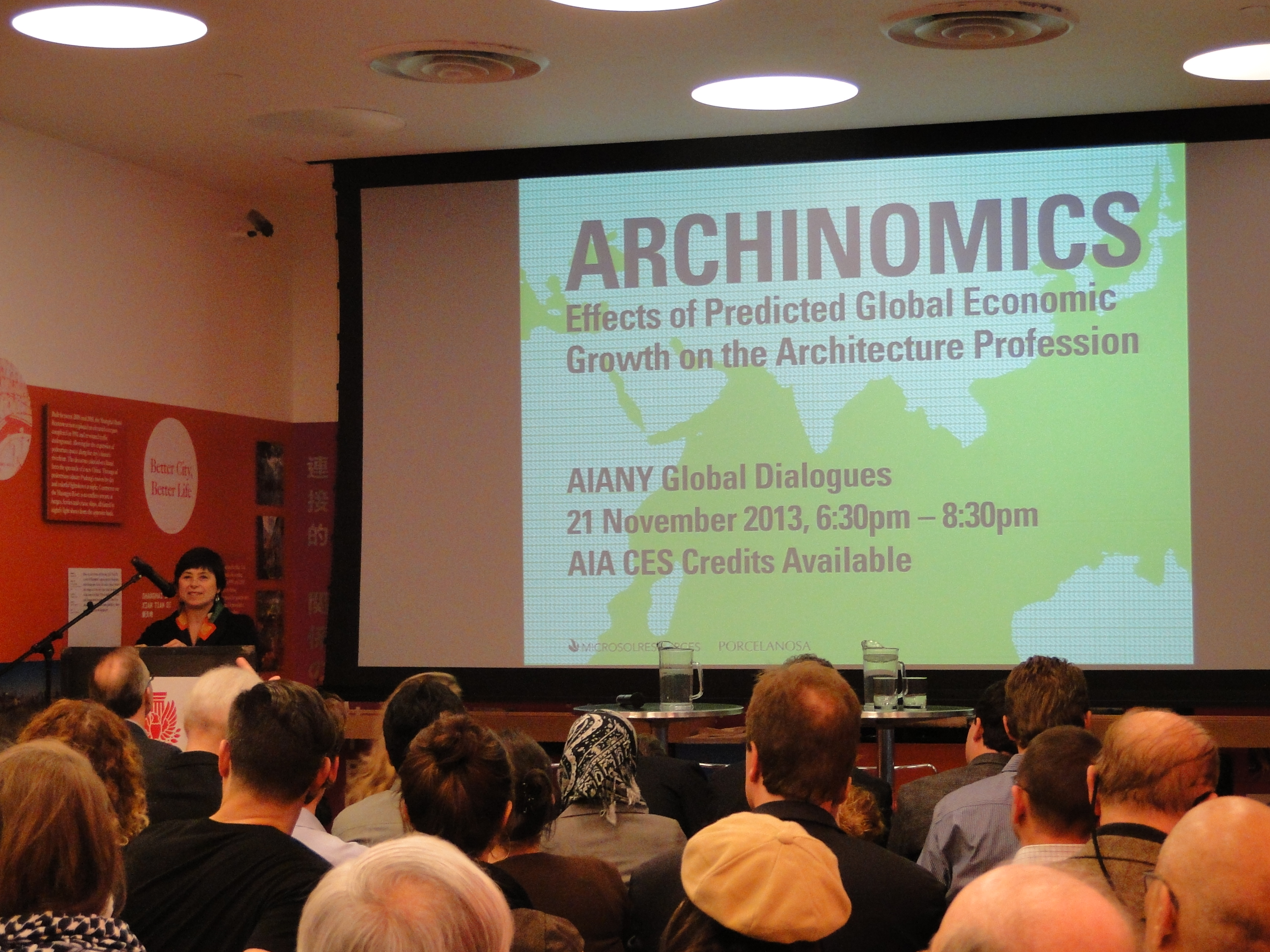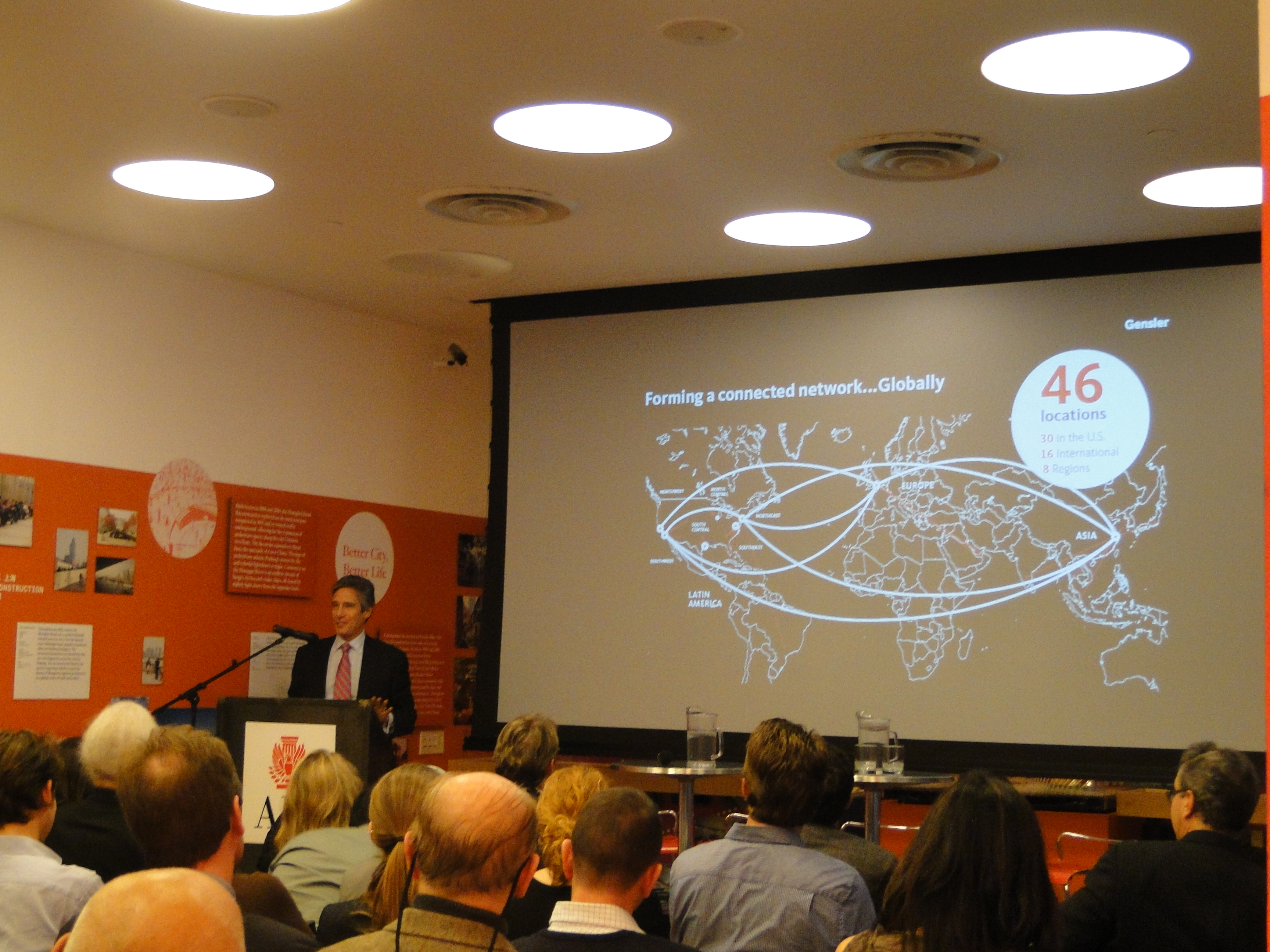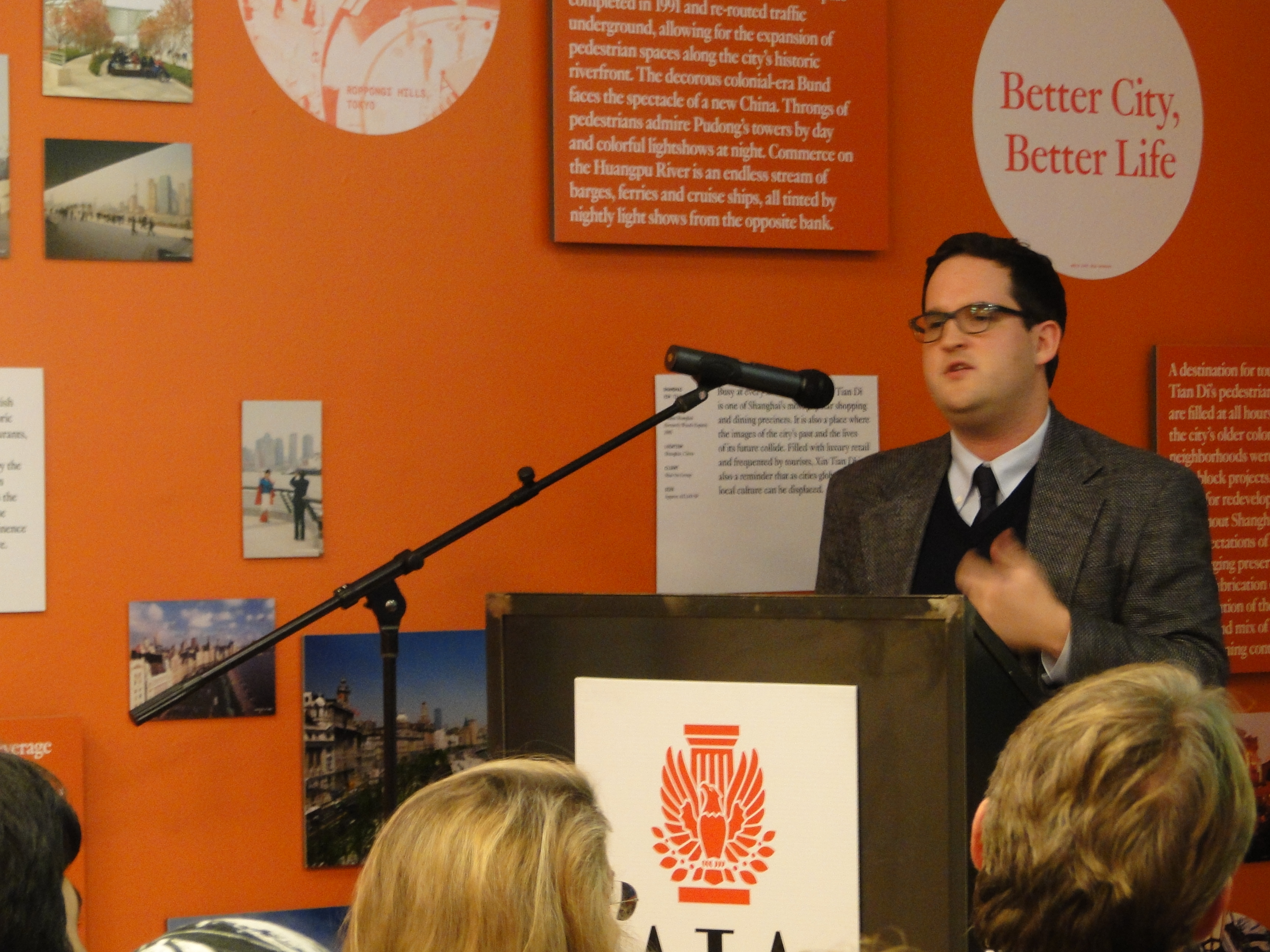by: Bruce Fisher AIA
Where is the most expensive office rent in the world in 2013? Unexpectedly, Luanda, Angola, due to extreme economic growth and lack of Class A office space to serve multinationals. Surprising facts and trends were uncovered in “Archinomics: Effects of Predicted Global Economic Growth on the Architecture Profession,” hosted by the AIANY Global Dialogues Committee on 11.21.13. The program revealed several snapshots into potential opportunities for architects and related design professions based on predicted global economic growth through 2020 and beyond. Various perspectives led to understanding why opportunity exists not only in the fastest growing economies, but also in mature global capitals such as Tokyo and New York.
Noting China can no longer be considered an emerging economy, Giles Wrench, managing director of the International Desk for Jones Lang LaSalle, focused on other markets, particularly the “African Century,” calling attention to 10 mature and emerging cities, including Cape Town, Durban, Nairobi, and Accra. With growth based on exports of natural resources and manufacturing, Africa has four key converging forces creating an anticipated, sustained GDP growth between 5 and 10% through 2017 in countries including Ethiopia, Ghana, Nigeria, and Kenya, all of which compete favorably with other quickly emerging markets. Working-age population across Africa will exceed that of North and South America, Latin America, Southeast Asia, China, India, and Europe by 2040, and foreign direct investment (FDI) will continue to surge, particularly in Sub-Saharan Africa. The resultant influx of multinationals and corresponding expansion of the middle class will mean a huge shortage of commercial real estate stock and a significant need for architects with international expertise.
While agreeing that the fastest growth will be in Africa, Latin America, and Southeast Asia, Patrice Darrington, chair for the Global Real Estate Development Program at the NYU Schack Institute of Real Estate, emphasized many of the greatest opportunities for architects will largely remain in “older” global capitals such as Tokyo, Hong Kong, London, and New York due to the concentration of high net wealth individuals (HNWI). While these traditional global capitals will have comparably slow growth, the wealth per capita equates to long-term architectural opportunities in all scales of design. Tokyo, for example, has more Fortune 500 companies that any other city in the world, and, in spite of Japan’s aging population, the megalopolis will continue to grow to a population of an estimated 48 million by 2035, based on Japan’s demographic shifts. For Tokyo, this means a retooling of a vast amount of existing building stock such as Class B office space – a phenomenon also in New York.
Gensler, with 3,500+ employees in 43 global offices, plans to double the number of offices across the world in the coming years, taking full advantage of expanding economies and changes in developed ones. Managing Principal Joseph Brancato, AIA, explained the growth allows the firm to follow and often serve repeat clients as they expand into new markets. Often, the leaders within Genler’s overseas offices are employees returning home after working in one of the U.S. offices, and expansion is one of the primary methods by which employees are offered unusual opportunities for growth within the firm. Scale and critical mass allow Gensler to assess risk through extensive research into the political and legal structures of place, an advantage smaller firms do not have. But “feet on the ground,” and reliance on colleagues with a deep understanding of and connections to the culture are the most critical factors for success of large or small offices working internationally. Work opportunities, even a single job, can be leveraged to get a foot in the door in an expanding market. Emphasis was placed on the necessity for each office to be integrated into its location through the hiring and training of architects embedded within the culture and country. Moderator Jesse Keenan, research director for the Center for Urban Real Estate (CURE) at Columbia University, asked if an expanding office also meant expanding the scope of services into, for instance, engineering. In the case of Gensler and other large firms such as KPF, the trend is to focus on core architectural design services while continuing to hire the best outside consultants who have honed their core expertise.
Global architecture firms based in New York have increasingly relied on emerging markets in the Middle East, South America, and Asia to build diverse practices and expand opportunities for work not available in the U.S., particularly since the 2008 recession. As the “Practical Utopias” exhibition shows, Asia has been an incubator for U.S. architects to explore ideas that have, in turn, been transformed and imported to the U.S. While spotlighting a handful of trends in a vast topic, “Archinomics” reiterated the critical place and demand for architects in a global marketplace.
Bruce Fisher AIA is a Director at Kohn Pedersen Fox Associates and co-chairs the AIANY Global Dialogues Committee with Jeffrey Kenoff AIA. Global Dialogues events in 2011-2013 included “Shadow Cities”, “Going Viral” and “Densify”.
Event: Archinomics: Effects of Predicted Global Economic Growth on the Architecture Profession
Location: Center for Architecture, 11.21.13
Speakers: Joseph Brancato, AIA, Managing Principal, Gensler; Giles Wrench, Managing Director, International Desk, Jones Lang Lasalle; Patrice A. Derrington, Chair, Global Real Estate Development Program, NYU Schack Institute of Real Estate; Jesse M Keenan, Research Director, Center for Urban Real Estate, Columbia University (moderator); Jill N. Lerner, FAIA, AIANY 2013 President (opening remarks)
Organizers: AIANY Global Dialogues Committee
Sponsors: Porcelanosa and Microsol Resources
Media Sponsors: Archinect and Bustler













